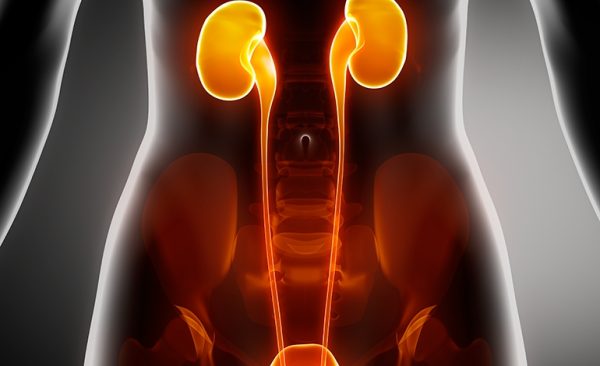ABOUT VASECTOMY
A vasectomy is a surgical procedure to sterilize a man and is performed on men who do not want to have children.
A vasectomy is performed by severing or sealing the vasa deferentia tubes which connect the testes to the urethra. After the procedure, men can still ejaculate semen, however, it does not contain sperm. Sperm continues to be produced and the body reabsorbs it, as it does not mix with the semen and is not ejaculated, which means it cannot fertilize an egg.
While the procedure can be reversed, a vasectomy is considered to be a permanent choice of birth control as a reversal of the procedure is not always a success.
Recommended for
- Male sterilization
TIME REQUIREMENTS
- Number of days in hospital: 1.
Overnight stay not required.
- Average length of stay abroad: 2 – 4 days.
- Number of trips abroad needed: 1.

COMPARE VASECTOMY PRICES AROUND THE WORLD
| Country | Cost |
|---|---|
| United States | 2500€ |
| Tunisia | 1346€ |
| Mexico | 897€ |
| Morocco | 523€ |
HOW TO FIND QUALITY TREATMENT ABROAD
BEFORE VASECTOMY ABROAD
The patient’s testicles and scrotum are cleaned with an antiseptic solution and shaved. For nervous patients, along with the local anesthetic, patients may be given a sedative.
HOW IS IT PERFORMED
Some patients may be administered with an intravenous (IV) sedative to help them to relax during the procedure. A local anesthetic is usually administered into the area and the surgeon will make 1 or 2 small incisions in the scrotum. Through these, the vas deferens is cut on either sidea and the ends of the vas deferens are tied, stitched, or otherwise sealed. The vas deferens is then placed back inside the scrotum, and the skin is closed, usually with dissolvable stitches.
There are different techniques which can be applied in the procedure. Instead of using a scalpel, there is a non-scalpel vasectomy which can be carried out. This involves using a clamp to open the skin in the scrotum as opposed to using a scalpel. This techniques reduces bleeding and reduces the risk of complications.
Another method which may be used is the Vasclip implant method. This involves the closure of the vas deferens with a device known as a Vasclip, and therefore avoids cutting, suturing or sealing the vas deferns. While this method reduces the pain, discomfort, and complications that are associated with a more traditional method, it is not as effective as other methods.
Anesthesia
Local anesthetic.
Procedure duration
The Vasectomy takes 20 to 30 minutes.

WHAT TO EXPECT AFTER VASECTOMY
Post procedure care
Immediately after surgery, the scrotum may be numb for a few hours. Patients are able to return to normal, non-strenuous activity the day after the procedure.
Patients should also take extra precautions when having intercourse in the months after surgery, as it can take a few months for remaining sperm to be absorbed by the body. Patients should complete a semen sample test, to ensure that the sperm count shows it as zero.
Possible discomfort
Swelling and discomfort for several days after surgery is normal, patients can benefit from wearing snug underwear for a least a couple of days after surgery.
Less frequently, patients may encounter a dull ache in the testicles during sexual arousal for several months after surgery, but this should pass.
IMPORTANT THINGS TO KNOW ABOUT VASECTOMY
Success rates
This procedure offers very high success rates, but patients should employ another method of birth control until their sperm count reaches zero. For the patient’s sperm count to reach zero can take several months.
Not recommended for
- Men considering sperm banking
- Men who may want children in future
Potential risks
- Infection
- Scarring
- Bleeding
FREQUENTLY ASKED QUESTIONS
Most vasectomies are reversible. Whether or not a vasectomy can be reversed depends on a number of factors, including the type of vasectomy and how long it has been since it was performed. Your surgeon can give you more information about your chances for successful reversal. However, vasectomies are intended to be permanent and should not be performed if you are planning on having children in the future.
Serious complications from vasectomy surgery are rare. However, risks include bleeding, blood clot, swelling or bruising in the genital area, fluid buildup in the testicles, and surgical failure (resulting in your partner becoming pregnant).
There are many myths surrounding vasectomies that some patients believe. However, a vasectomy will not affect sexual performance, permanently damage your sexual organs, increase your risk of cancer (including prostate cancer), increase your risk of heart disease, or cause severe pain.
Vasectomy surgery is performed under local anesthesia, meaning the affected area is numbed but you are awake and alert throughout the procedure. You should not feel any pain during the procedure, although you may feel some unpleasant sensations. After the procedure, once the anesthetic wears off there may be some mild pain that goes away within a few days.
Vasectomies are not immediately effective. You will need to wait until a doctor confirms there is no sperm in your semen to stop using other forms of birth control. This can take up to 3 months in some cases, and you may need to ejaculate up to 20 times before you can be sure. In rare cases, a vasectomy can fail. Vasectomies are an effective method of birth control, but will not protect against sexually transmitted infections such as HIV.
A vasectomy cannot “grow back,” and if effective can only be reversed through another surgical procedure.
Vasectomy is usually performed as an outpatient procedure and you can leave the clinic the same day. You will need to rest for around 24 hours after the procedure and avoid sports, heavy lifting, or other strenuous activities for a week afterwards. You will also need to refrain from bathing or swimming for at least 24 hours. You may return to sexual activity after one week, although the procedure may not be effective right away (see above). If you ejaculate before one week, you may have pain or find blood in your semen.













